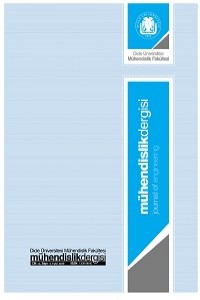Otonom Araçların Özellikleri, Mevcut Durumu ve Gelecekteki Yerinin Ulaştırma ve Trafik Üzerine Etkisi Bağlamında İncelenmesi
Abstract
Otonom araçlar geleceğin ulaştırma ve kentleşmesini şekillendirecektir. Ve gelecekteki ulaştırmada temel taşlardan birisi olacaktır. Bu bağlamda mevcut ulaştırma ve trafik sistemine penetrasyonu on yıllar alacak olup söz konusu ulaştırma türü ile mevcut otomobillerden (konvansiyonel araç) oluşan bir karma trafikten bahsedilecektir. Buna göre trafik akımı, trafik akım hızı, trafik güvenliği, trafik düzen ve sürekliliği, şerit disiplini, takip mesafesi, konfor gibi hususlar penetrasyon düzeylerine göre sürekli bir değişim gösterecektir. Bunun bir düzen ve istikrarı yakalaması uzun yıllar alacak bir süreçtir. Otonom araçların trafik düzeni, trafik akım hızı, verimi, otopark yer tasarrufu, trafik güvenliği ve seyahat kilometreleri gibi konuları geliştirmesi beklenen bir durumdur. Ancak söz konusu heterojen akım dâhilindeki orta vadede bütün bu özelliklerin, karma trafiğin getirileri ve uygulama tecrübeleri bağlamında büyük değişiklikler göstermesi beklenebilmektedir. Bunun iyi yönetimi için şimdiden safhalarına göre iyi kavranması, analizi ve yorumu gerekecektir. Bu çalışmada öncelikle otonom araçların temel özellikleri ele alınmaktadır. Ardından mevcut durumu değerlendirilmekte ve otonom araç seviyelerinden bahsedilmektedir. Bu çerçevede de kullanıcı nezdinde kabulü irdelenmekte ve bu bağlamda sonuç ve öneriler paylaşılmaktadır.
References
- B. Schoettle, M. Sivak, (2014). A survey of public opinion about autonomous and selfdriving vehicles in the US, the UK, and Australia.
- D.J. Fagnant, K. Kockelman,(2015). Preparing a nation for autonomous vehicles: opportunities, barriers and policy recommendations, Transp. Res. Part A 77 (Supplement C)167–181, doi:10.1016/j.tra.2015.04.003.
- I. Paromtchik, C. Laugier, (2015). Motion generation and control for parking an autonomous vehicle, ICRA 3112–3117.
- J. Cui, G. Sabaliauskaite, (2017). On the alignment of safety and security for autonomous vehicles, IARIA CYBER, Barcelona, Spain.
- J. Jansson, (2017). Decision Making for Collision Avoidance System, SAE, Detroit, Michigan, 2002, pp. 1–10. [2] www.redcross.org.lb (Accessed 15 March).
- L. Davis, (2017), Dynamic origin-to-destination routing of wirelessly connected, autonomous vehicles on a congested network, Phys. A 478 93–102.
- M. Ragul, V. Venkatesh, (2015). Autonomous vehicle transportation using wireless transmission, IJET 5 (2) 811–819.
- M. Zhu, H. Chen, (2017). A model predictive speed tracking control approach for autonomous ground vehicles, MSSP 87, Part B 138–152.
- National Center for Statistics and Analysis, (2005). National Highway Traffic Safety Administration, Traffic Safety Facts.
- National Highway Traffic Safety Administration, (2017). 2016 Fatal motor vehicle crashes: overview, National Center for Statistics and Analysis U.S. Department of Transportation, Washington, D.C,. DOT HS 812 456.
- R. Mishra, A. Singh, R. Kumar, (2016) Vanet security: Issues, challenges and solutions, in: International Conference on Electrical, Electronics, and Optimization Techniques (ICEEOT), IEEE, 2016, pp. 1050–1055, doi:10.1109/ICEEOT. 2016.7754846.
- S. E. Shladover, (2007) “Progressive deployment steps leading toward an automated highway system (AHS),” in Transportation Research Record No. 1727. Washington, DC: Transportation Research Board, 2000, pp. 154–161. [11] S. E. Shladover, “PATH at 20 – History and major milestones,” IEEE Trans. Intell. Transp. Syst., vol. 8, no. 4, pp. 584 –592.
- Society of Automotive Engineers (SAE), (2016). SAE-J3016: Taxonomy and definitions for terms related to driving automation systems for on-Road motor vehicles.
Abstract
References
- B. Schoettle, M. Sivak, (2014). A survey of public opinion about autonomous and selfdriving vehicles in the US, the UK, and Australia.
- D.J. Fagnant, K. Kockelman,(2015). Preparing a nation for autonomous vehicles: opportunities, barriers and policy recommendations, Transp. Res. Part A 77 (Supplement C)167–181, doi:10.1016/j.tra.2015.04.003.
- I. Paromtchik, C. Laugier, (2015). Motion generation and control for parking an autonomous vehicle, ICRA 3112–3117.
- J. Cui, G. Sabaliauskaite, (2017). On the alignment of safety and security for autonomous vehicles, IARIA CYBER, Barcelona, Spain.
- J. Jansson, (2017). Decision Making for Collision Avoidance System, SAE, Detroit, Michigan, 2002, pp. 1–10. [2] www.redcross.org.lb (Accessed 15 March).
- L. Davis, (2017), Dynamic origin-to-destination routing of wirelessly connected, autonomous vehicles on a congested network, Phys. A 478 93–102.
- M. Ragul, V. Venkatesh, (2015). Autonomous vehicle transportation using wireless transmission, IJET 5 (2) 811–819.
- M. Zhu, H. Chen, (2017). A model predictive speed tracking control approach for autonomous ground vehicles, MSSP 87, Part B 138–152.
- National Center for Statistics and Analysis, (2005). National Highway Traffic Safety Administration, Traffic Safety Facts.
- National Highway Traffic Safety Administration, (2017). 2016 Fatal motor vehicle crashes: overview, National Center for Statistics and Analysis U.S. Department of Transportation, Washington, D.C,. DOT HS 812 456.
- R. Mishra, A. Singh, R. Kumar, (2016) Vanet security: Issues, challenges and solutions, in: International Conference on Electrical, Electronics, and Optimization Techniques (ICEEOT), IEEE, 2016, pp. 1050–1055, doi:10.1109/ICEEOT. 2016.7754846.
- S. E. Shladover, (2007) “Progressive deployment steps leading toward an automated highway system (AHS),” in Transportation Research Record No. 1727. Washington, DC: Transportation Research Board, 2000, pp. 154–161. [11] S. E. Shladover, “PATH at 20 – History and major milestones,” IEEE Trans. Intell. Transp. Syst., vol. 8, no. 4, pp. 584 –592.
- Society of Automotive Engineers (SAE), (2016). SAE-J3016: Taxonomy and definitions for terms related to driving automation systems for on-Road motor vehicles.
Details
| Primary Language | Turkish |
|---|---|
| Journal Section | Articles |
| Authors | |
| Publication Date | September 30, 2020 |
| Submission Date | December 5, 2019 |
| Published in Issue | Year 2020 Volume: 11 Issue: 3 |


